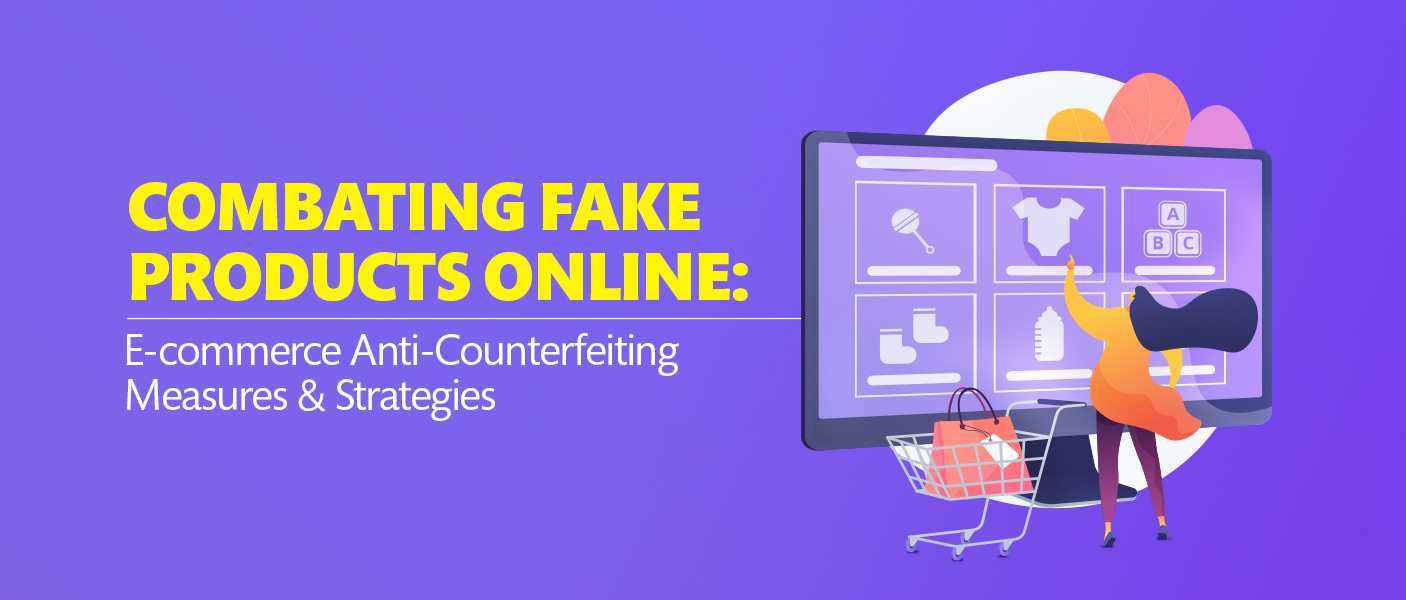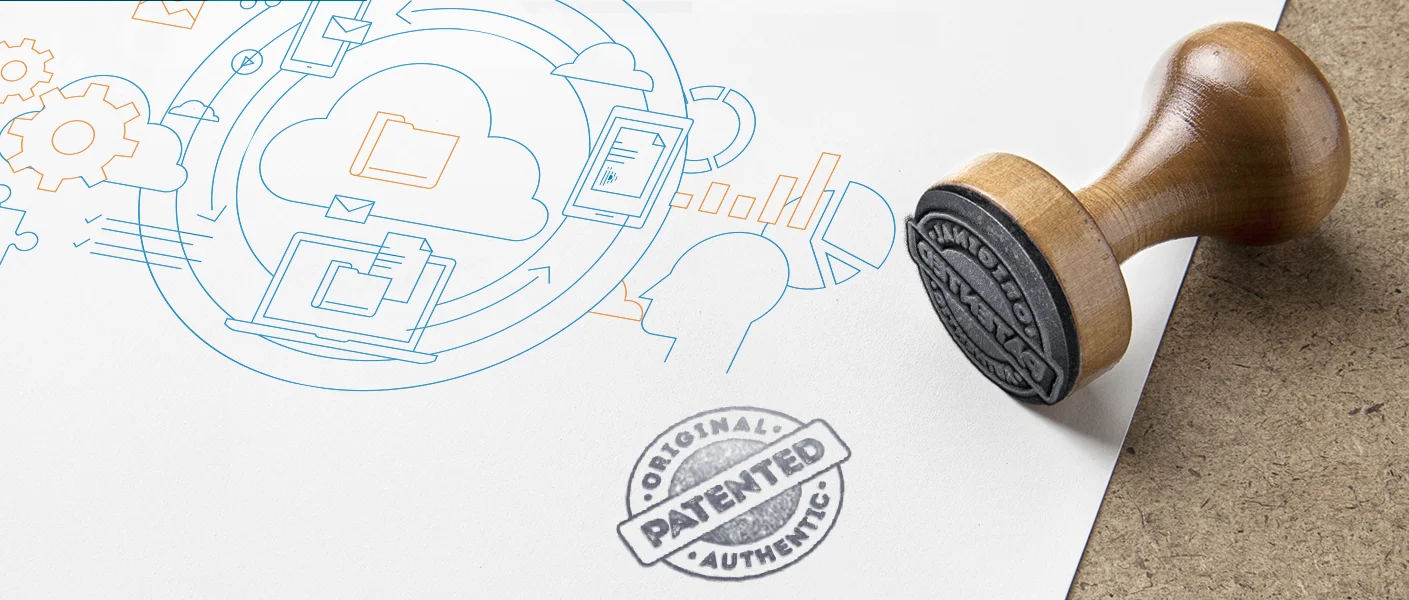Combating Fake Products Online: E-commerce Anti-Counterfeiting Measures & Strategies
December 15, 2023 By Shyam ParmarWe have advanced in technology so much that anything that comes into our mind can be delivered to our doorstep; from a safety pin to a brand-new car. With E-commerce turning into a billion-dollar industry, there also arises a billion-dollar worry about whether whatever is delivered at our doorstep is original or fake. Yes, counterfeit goods are a massive problem and along with e-commerce, it is growing too. So, what can be done? Let’s figure out.
What are Counterfeit Goods?
While shopping you find a Nike shoe, way too cheap and you grab it thinking that you got a huge discount but, if you visit its official site the price of the same shoe is not even a rupee lesser. Have you wondered why? Because what you bought for 1000 Rs. is a counterfeit of it where its original price is Rs. 10000. That’s what counterfeit goods are.
When a certain product is imitated or replicated such that it resembles the original product in every way, without any authorization or approval from the original trademark or copyright owner, it is called a counterfeit product. It mimics every single detail of the original product but often fails to meet the expected quality standards and also poses serious safety hazards to consumers. Today, the production and sale of illegal counterfeit goods can be found in every industrial sector from clothing, accessories, electronics, pharmaceuticals, automotive parts, and more.
Rising E-commerce and the Counterfeit Goods Market
E-commerce is booming, poised to surpass $8.1 trillion soon. While it offers convenience for legitimate businesses, it also opens doors for global counterfeiters.
The reason the counterfeit goods market is growing instead of curbing is that customers seeking cheaper alternatives contribute to a growing threat of counterfeit goods, impacting businesses globally. Fierce competition in the online market fuels the rise of counterfeiters, posing challenges for businesses, including SMEs.
The Impact of Counterfeiting on E-commerce
The sale of counterfeit goods may appear as no big deal but its impact is enormous. To begin with, counterfeit products tarnish the reputation of legitimate brands because when customers purchase their products and receive counterfeit goods that are of low quality instead, it creates a negative experience with the genuine brand, impacting customer trust and loyalty.
Secondly, excessive availability of counterfeit products online may lead customers to opt for alternative brands or abandon online shopping, resulting in revenue loss and business impact.
Consumer unawareness about counterfeit products poses risks, especially with items like pharmaceuticals, automobile parts, electronics, or beauty products that may not meet safety standards, endangering health. Such incidents erode trust and diminish online shopping experiences.
The sale of counterfeit goods also leads to constant customer complaints, returns, and refunds which increases the pressure on e-commerce platforms and legitimate sellers; operational costs; and can even strain customer service resources. Small businesses have a huge impact in such cases due to limitations on their budget and resources.
Despite government efforts to curb counterfeiting, advanced technologies make detection difficult. While aimed at protecting consumers and businesses, these measures pose compliance challenges for legitimate sellers.
Counterfeiting deters consumer confidence, impacting industries and economies with job losses, stifled innovation, and reduced economic growth.
Identifying Counterfeiting in E-commerce
To identify counterfeits, it is necessary to maintain vigilance and combine manual and technological strategies. Check these steps when shopping online to identify counterfeits:
- Check seller reputation by going through the review ratings and feedback.
- Verify seller information by checking for clear and accurate details.
- Avoid unknown sites, shop from official brand stores or authorized retailers.
- Compare prices. Be wary of abnormally low prices as they may indicate a counterfeit.
- Examine product images. Legitimate sellers use HD images, unlike counterfeit listings that use blurry or stolen images.
- Read descriptions carefully. Watch for vague or misleading information.
- Check for spelling/grammar mistakes. Professionalism matters.
- Verify contact information. Look for a valid email address, phone number, and physical address.
- Research the brand. Confirm details on the official website.
- Check return policies. Unclear, overly restrictive policies and no guarantees are red flags.
- Use trusted, well-known, and reputable e-commerce platforms.
- Look for seals/certifications. Check for authenticity features.
- Review seller location. Be cautious of regions known for counterfeits.
- Use browser extensions/tools to identify counterfeits.
- Trust your instincts. If in doubt, proceed with caution or avoid the purchase.
Legal Landscape to Combat E-commerce Counterfeiting
In India, various laws govern e-commerce and counterfeiting. Key legal provisions include:
1. The Information Technology Act, 2000 -
A comprehensive law addressing various aspects of electronic commerce including authentication of electronic records and digital signatures.
2. The Consumer Protection Act, 2019 -
Protects consumers' rights, including the right to be protected against the marketing of goods and services that are hazardous to life and property, establishing Consumer Commissions to address complaints.
3. The Trademarks Act, 1999 -
Protects registered trademarks, and counterfeiting infringes upon these trademark rights.
4. The Copyright Act, 1957 -
Counterfeit goods that infringe on copyrighted literary, artistic, and musical works, may be subject to legal action.
5. The Patents Act, 1970 -
Deals with the grant and revocation of patents relevant to certain products sold online.
6. The Customs Act, 1962 -
Empowers customs authorities to detain and seize goods suspected of infringing intellectual property rights, including counterfeits, at the borders.
7. Competition Law (Competition Act, 2002) -
Addresses anti-competitive practices relevant to issues of unfair trade practices and abuse of dominant positions.
8. The Indian Penal Code, 1860 -
Certain provisions of the IPC, such as those related to fraud, cheating, and counterfeiting, may be invoked in cases involving criminal intent or activities.
9. Geographical Indications of Goods (Registration and Protection) Act, 1999 -
Protects the geographical indications of goods against counterfeiting.
10. The Foreign Trade (Development and Regulation) Act, 1992 -
Empowers the government to regulate imports and exports, relevant to the control of counterfeit goods at the national level.
For specific e-commerce counterfeiting cases, consult legal professionals, considering potential amendments or new legislation
Steps to Curb Counterfeiting Online
Rising deep fakes and technological advancements highlight the need for e-commerce counterfeit detection. Tackling this issue requires a collaborative effort involving governments, law enforcement, industry, and tech solutions for improved prevention and detection. Key steps include IP protection and strengthened cooperation. Let's check others.
1. Invest in Technology Solutions -
Implement robust digital authentication mechanisms, such as AI and machine learning to detect counterfeit patterns, unique product identifiers, QR codes, holograms, or algorithms to analyze product listings, customer behavior, and transaction data and help consumers verify the authenticity of products.
2. Strengthen Seller Verification -
Enforce rigorous seller verification processes. Verify business credentials, licenses, and contact information.
3. Educate Consumers -
Raise awareness about counterfeit risks and provide verification tips.
4. Implement Strict Intellectual Property Policies -
Enforce and regularly update policies explicitly prohibiting the sale of counterfeit goods. Communicate consequences for violations, including account suspension and legal action.
5. Implement Robust Reporting Mechanisms -
Provide users with easy and effective ways to report suspected counterfeit listings. Handle reports promptly and investigate reported cases thoroughly.
6. Deploy Image Recognition Technology -
Use image recognition technology to scan and compare product images and help identify duplicate or suspicious listings across the platform.
7. Monitor User Behavior -
Detect and address abnormal patterns on the platform.
8. Collaborate with Law Enforcement -
Work closely with law enforcement agencies to identify and legally pursue individuals or groups engaged in counterfeiting.
9. Adopt Blockchain Technology -
Embrace blockchain for transparent and traceable supply chains.
10. Industry Collaboration -
Join efforts with industry groups to combat counterfeiting.
11. Implement Regular Audits -
Enforce periodic audits for policy compliance and employ automated systems for ongoing monitoring.
12. Advocate for Responsible Advertising -
Supervise and regulate online advertising to curb the promotion of counterfeit products. Work with advertising platforms to ensure responsible marketing practices.
13. Report to Authorities -
If you've identified the sale of counterfeit goods, you can report them in the following ways:
- contact the brand owner of that specific brand,
- visit the National Cyber Crime Reporting Portal (https://cybercrime.gov.in/) and register your complaint,
- report to consumer protection websites in India,
- if it involves economic offenses, report the incident to the Economic Offenses Wing (EOW) of the local police.
- visit the local police station and file a complaint,
- contact the Ministry of Commerce and Industry which oversees intellectual property issues,
- file complaints to online brand protection platforms if any,
- report to CERT-In, the national nodal agency for addressing cybersecurity incidents. They may guide on handling cybercrime, including counterfeiting,
- if the website is using social media for promotion, report on their respective social media platforms,
- complain with consumer forums like the National Consumer Helpline (NCH) to seek assistance in resolving the issue.
When reporting, include the website URL, product details, transaction info, and any supporting evidence. Keep records and note complaint reference numbers for follow-ups. Consult legal professionals for guidance on protecting your rights.
Conclusion
Detecting e-commerce counterfeiting is challenging, yet possible. Despite the increasing sophistication of counterfeiters, Parker and Parker Co. LLP, an expert firm in Counterfeiting Law in India, can provide valuable insights into detection methods and legal actions against counterfeiters.





